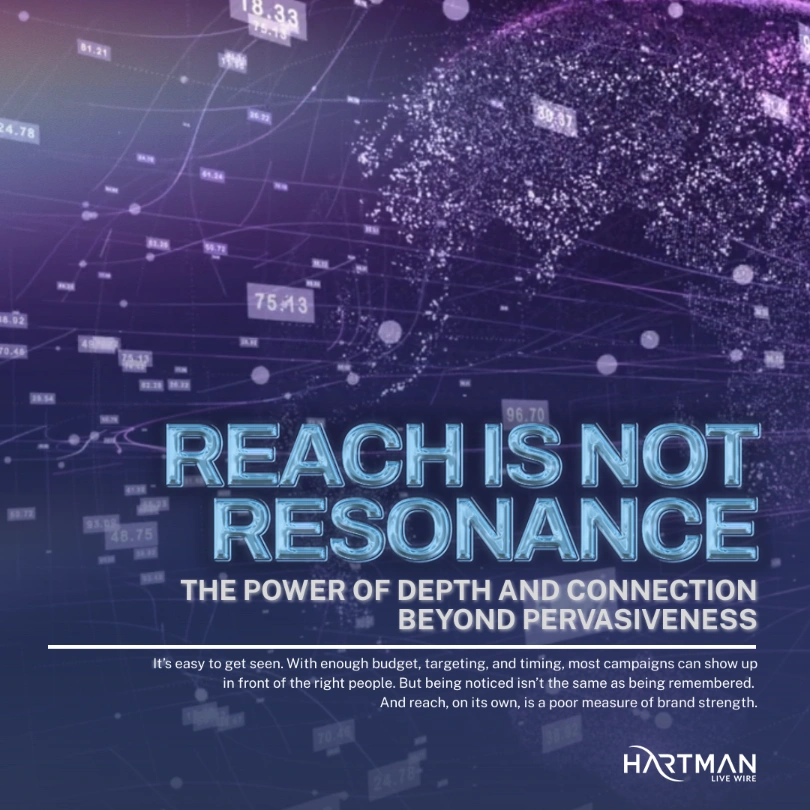It’s easy to get seen. With enough budget, targeting, and timing, most campaigns can show up in front of the right people (Romaniuk & Sharp, 2016). But being noticed isn’t the same as being remembered. And reach, on its own, is a poor measure of brand strength.
Some of the most visible brands in the market still struggle to be understood. They show up everywhere but say nothing people hold on to. The message doesn’t land. The tone doesn’t stick. And once the ad ends, the impact ends with it.
That gap, between what’s seen and what’s felt, is where brand equity is either built or lost. It’s the difference between a passing impression and a lasting idea.
Brands aren’t built by impressions. They’re built by interpretation, what people take from what they see. A strong brand makes people feel something. It creates a reference point. It leaves behind a clear sense of who you are, not just where you appeared (Romaniuk & Sharp, 2016).
That’s where strategy comes in. Because resonance doesn’t happen by accident. It’s the product of consistent voice, repeated meaning, and ideas sharp enough to get through. It’s not just about storytelling, either. It’s about structure, knowing what to say, how to say it, and how to carry that across channels without letting it dilute.
It also means choosing the right moments, not just more of them. The brands that last aren’t chasing attention at all costs. They’re showing up in ways that align with what they stand for, building depth with each touchpoint (Barrett, 2021).
Of course, reach matters. But it only works when it’s in service of something deeper. A brand that connects will outperform a brand that only broadcasts, even if the latter has more exposure weight behind it.
Visibility might win the scroll. But resonance is what earns the pause.
REFERENCES:
Barrett, S. (2021). From reach to relevance: Brand building in the age of overload. Brand Insight Review, 9(2), 19–27.
Romaniuk, J., & Sharp, B. (2016). How brands grow: Part 2: Emerging markets, services, durables, new and luxury brands. Oxford University Press.

